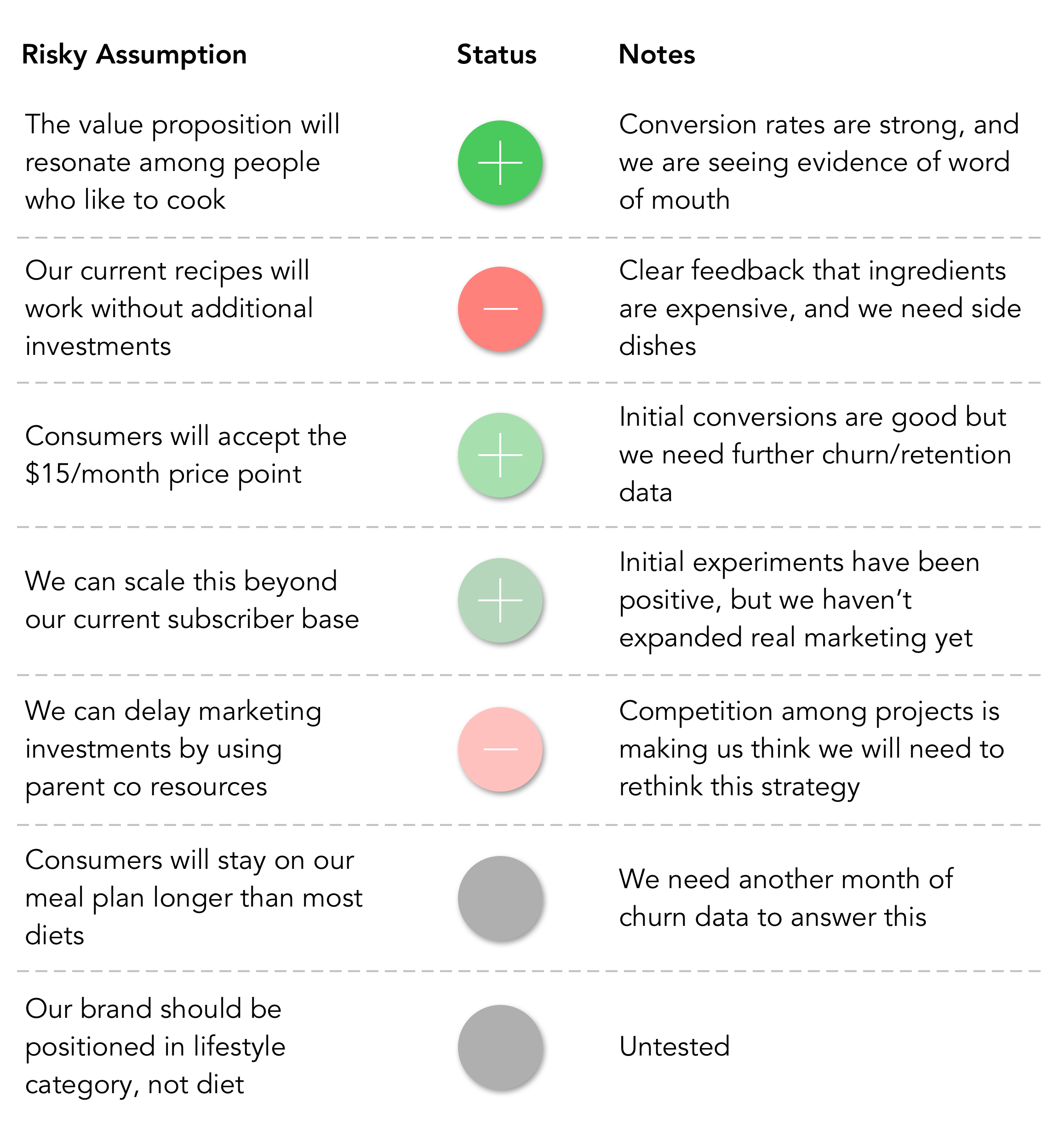At the start of mentoring an entrepreneurship class the other day, I realized: “This group has no consensus or specificity around their belief system.” If you don’t know what you believe, how can you check if you are right? Working blindly leads to working harder, not smarter.
There are lots of ways to get specificity and shared understanding around your belief system, depending on stage.
Early on, you can do an assumptions exercise, a lean canvas or a business model canvas. You can write a letter from a future customer. You can do UX personas. You can do a concise 10-slide VC pitch deck.
I usually start with an assumptions and risks exercise and then highlight the biggest risks. But what is a good way for a team to stay on the same page after that point?
I really like using the “risks dashboard” that was originally created by my former Neo colleagues Nicole Rufuku and Amanda Lasnik. It puts all of your *important* risks on the board. It forces the team to prioritize what to test and when. It helps everyone see your confidence level around your big risks.
Here is an “anonymized” example:

Keep it simple:
- grey dot: not yet in testing OR currently in testing but no real data yet
- green dot: positive data coming back; the more saturated the green, the higher the level of confidence
- red dot: worrying data coming back; the more saturated the red, the more worried you are about being wrong
I don’t think it matters whether you write out the risks as assumption or hypothesis statements. The key thing is getting explicit about what you (as a team) believe, what you are working on, and how you are doing.